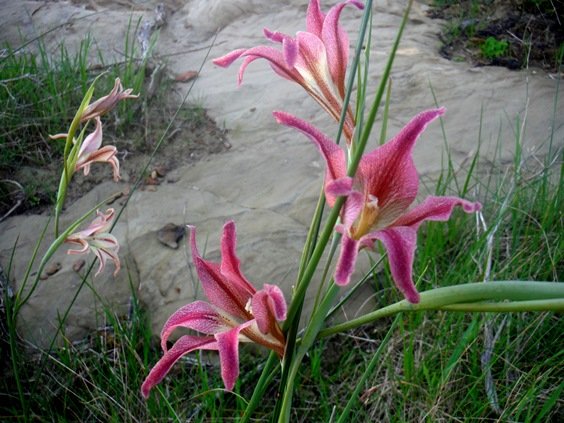Gladiolus liliaceus flower colours

Author: Ivan Lätti
Photographer: Thabo Maphisa
Colour variations of Gladiolus liliaceus flowers include these seen next to a road east of Caledon. The vegetation here would have been renosterveld if nearly everything had not been transformed into wheat fields in this region.
The daytime flower colour of G. liliaceus ranges from beige, brown, purplish to rusty or pinkish red but most of the shades are somewhat dulled and dusky.
For the benefit of targeted night pollinators like certain moths, parts of the flowers change colour in the evening to bluish, mauve or lilac. This is when a strong clove or carnation scent also becomes exuded by the plant. Such nightfall colour and scent changes are not unknown among humans of the gender likened to flowers. The Afrikaans common name of kaneelaandblom (cinnamon evening flower) compounds the uncertainty regarding the exact nature of the luring fragrance.
Whatever the aroma, the moths that perform the bulk of pollination services for this species benefit from the dusk colour change, while daytime nectar diners may ignore the subtle options offered to them, pushing to their goals (Vlok and Schutte-Vlok, 2015; Manning, 2009; Goldblatt and Manning, 1998; Mustart, et al, 1997; iNaturalist; www.pacificbulbsociety.org).

